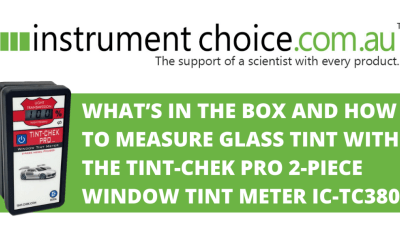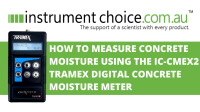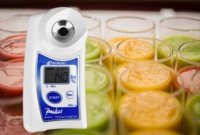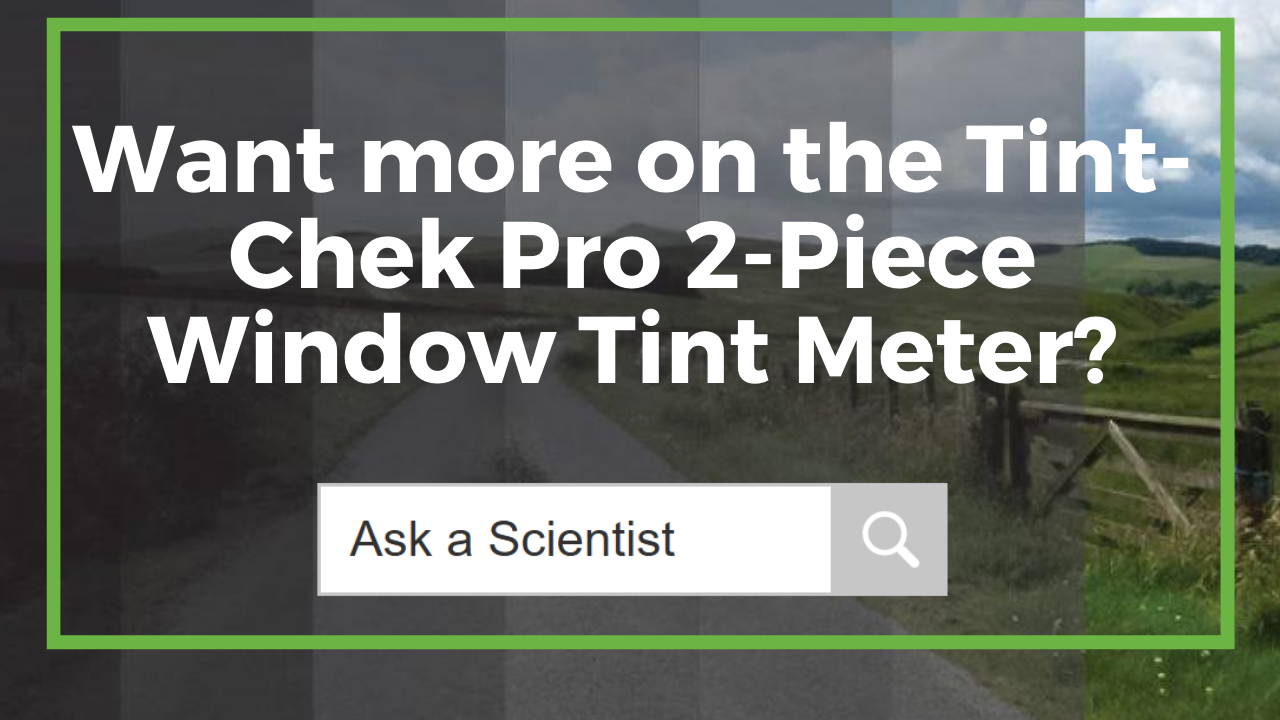How to Measure Glass Tint with the Tint-Chek Pro 2-Piece Window Tint Meter

Tint meters measure the amount of visible light transmitted through a tinted window or glass surface. Tint installers and law enforcement officers often use tint meters to check light transmission through tinted automobile glass.
The IC-TC3800 is a straightforward and robust meter with a convenient two-piece design and an easy-to-use single button operation.
Figure 1 Watch an Instrument Choice Measuring Glass Tint with the Tint-Chek Pro 2-Piece Window Tint Meter here.
The Tint Meter Scale
Visible Light Transmission (VLT) is graded on a scale from 0 to 100%. A reading of zero means no light is transmitted. On the other end of the scale, 100% indicates all light passes through the glass. For passenger vehicles, the allowable VLT percentage varies from state to state. (See the additional links below for individual state guidelines.)
Calibration Check
1. Turn the unit on by pressing the power button. The meter will display 100% when it is ready for measurement.
2. Check the meter against the included standard. Before performing a calibration check, ensure the included tint standards are clean and not scratched. Blow off any dust that may appear on the surface and remove any fingerprints with a micro-fibre cloth. The perform the calibration check by pulling apart the two pieces of the tint meter, insert the glass calibration scale and put the meter back together.
3. Press the power button to start. The measurement will appear within a few seconds. The meter should measure the VLT values within ± 2% of the calibration standards indicated value.
4. Repeat the same with the second standard. Open the tint meter, insert the calibration plate, close the meter, and press start.
5. If the value falls within ± 2% of the calibration standards indicated value, the meter is ready for use.
Measurement
6. Ensure the tinted glass surface to be measured is clean and fingerprint free.
7. Place the LCD on one side of the glass panel and the reflector on the other side. The magnet will hold the two pieces together.
8. Press the start button.
9. A percentage of visible light transmission % reading will appear. Repeat in a few places and take an average reading for more precise results.
Conclusion
The Tint-Chek Pro 2-Piece Window Tint Meter (IC-TC3800) is a tint meter that’s portable and straightforward to use. The device is capable of measuring VLT percentage in automotive and other flat glass applications a matter of seconds.
For more information on this or other window tint meters, see the links below or contact us!
Additional links
- Browse the full range of tint meters here
- View the Tint-Chek Pro 2-Piece Window Tint Meter (IC-TC3800) product page and complete specifications.
- Watch What’s in the Box and Measuring Glass Tint with the Tint-Chek Pro 2-Piece Window Tint Meter again.
- View automotive tint specifications by state:
Also interesting
Excessive moisture in concrete floor slabs and screeds can lead to significant problems in many types of floor coverings. The IC-CMEX2digital concrete moisture tester can help you avoid moisture-related problems in concrete and identify the cause of issues if they do occur.
The IC-CMEX2 is capable of taking non-destructive moisture measurements in a matter of seconds. This key benefit will enable you to cover large concrete areas efficiently. The instrument also incorporates an optional plug-in port for a pin-type wood probe and an RH probe (Hygro-i), making it the ideal all-in-one device for flooring professionals.

The IC-PAL-1 Digital Pocket Refractometer by Atago Instruments has a wide Brix measurement range from 0 to 53%, making it a tool that's well-suited to measure almost any fruit juice, food, or drink. In this video article, we demonstrate how just how straightforward it is to take a Brix measurement in fruit juice using the IC-PAL-1.


